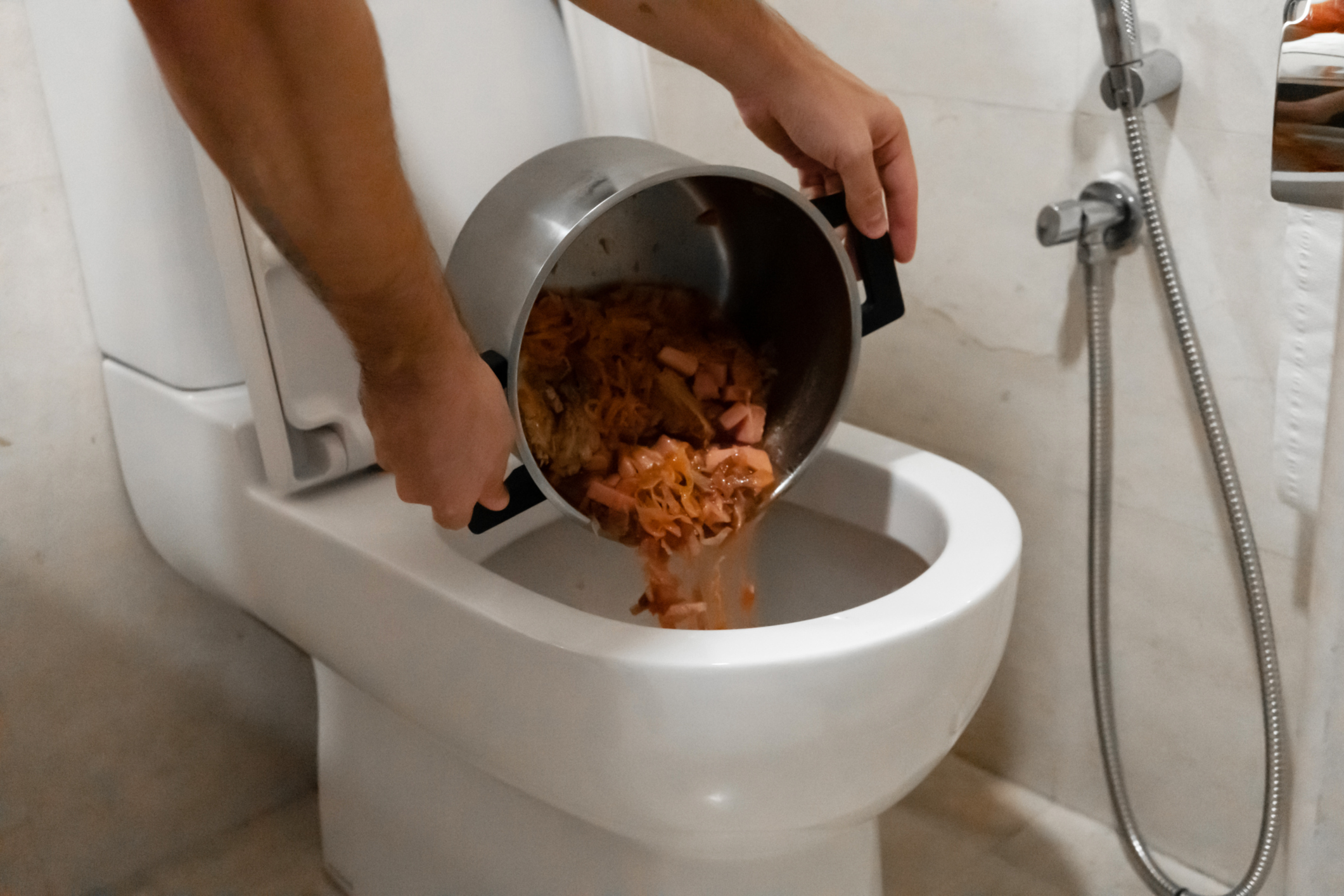Are You Permitted to Dispose of Food Waste in the Toilet?
Are You Permitted to Dispose of Food Waste in the Toilet?
Blog Article
What're your insights and beliefs about Is it safe to flush food (especially rice) down the toilet??

Intro
Many people are usually confronted with the problem of what to do with food waste, specifically when it concerns leftovers or scraps. One typical inquiry that arises is whether it's fine to purge food down the toilet. In this post, we'll delve into the reasons that individuals may consider purging food, the effects of doing so, and alternative techniques for appropriate disposal.
Reasons individuals might take into consideration purging food
Lack of awareness
Some individuals might not be aware of the prospective damage triggered by flushing food down the toilet. They may incorrectly believe that it's a safe method.
Benefit
Flushing food down the toilet might feel like a quick and very easy service to throwing away undesirable scraps, particularly when there's no close-by garbage can available.
Laziness
In many cases, people might just pick to flush food out of sheer negligence, without considering the repercussions of their activities.
Consequences of flushing food down the bathroom
Environmental effect
Food waste that winds up in rivers can contribute to contamination and damage marine communities. In addition, the water made use of to purge food can stress water resources.
Plumbing concerns
Flushing food can result in clogged pipes and drains pipes, creating pricey pipes repairs and troubles.
Types of food that must not be purged
Fibrous foods
Foods with fibrous appearances such as celery or corn husks can obtain entangled in pipelines and cause clogs.
Starchy foods
Starchy foods like pasta and rice can take in water and swell, resulting in clogs in pipes.
Oils and fats
Greasy foods like bacon or food preparation oils ought to never ever be flushed down the bathroom as they can strengthen and trigger clogs.
Proper disposal approaches for food waste
Making use of a waste disposal unit
For homes geared up with waste disposal unit, food scraps can be ground up and purged with the plumbing system. Nevertheless, not all foods appropriate for disposal in this way.
Recycling
Specific food packaging materials can be reused, lowering waste and minimizing environmental effect.
Composting
Composting is an eco-friendly method to throw away food waste. Organic products can be composted and made use of to enrich dirt for horticulture.
The relevance of correct waste management
Reducing environmental harm
Correct waste monitoring methods, such as composting and recycling, help minimize air pollution and maintain natural deposits for future generations.
Securing plumbing systems
By preventing the practice of flushing food down the bathroom, homeowners can protect against costly plumbing repair work and preserve the stability of their plumbing systems.
Final thought
To conclude, while it may be appealing to flush food down the bathroom for benefit, it's important to understand the possible effects of this activity. By embracing proper waste management practices and throwing away food waste properly, individuals can add to healthier plumbing systems and a cleaner setting for all.
FLUSH FOOD DOWN THE TOILET?
FLUSHING FOOD CAN CAUSE BLOCKED DRAINS IN YOUR HOME
All of the plumbing fixtures in your home are connected to the same sewer pipe outside of your home. This outdoor sewer pipe is responsible for transporting all the wastewater from your home to the Council sewer mains. Even small pieces of food that go down the kitchen sink can cause problems for your sewer. It should therefore be obvious that flushing larger bits of food, such as meat, risks a clog in either the toilet itself or the sewer pipes. Flushing greasy food is even more problematic because oil coagulates when it cools, coating the interior lining of your pipes.
THE TOILET IS NOT A BIN
Food isn’t the only thing that people shouldn’t be flushing down the toilet. People use the toilet to dispose of all kinds of things such as tampons, makeup wipes, dental floss, kitty litter and even underwear. Water goes to great lengths to educate residents about the high costs and stress placed on wastewater treatment systems simply from people flushing the wrong stuff down the toilet. It costs taxpayers millions of dollars each year, and homeowners thousands in blocked drain repairs.
FLUSHING FOOD IS A WASTE OF WATER
Flushing food is a waste of our most precious resource - water. In June this year Level 1 water restrictions were introduced to protect water supply from drought conditions. Much of New South Wales continues to be affected by prolonged drought with recent figures revealing up to 97 per cent of the state remains in drought. Depending on whether you have a single or dual flush toilet, every single flush uses between five and 11 litres of water. In the current climate this is a huge amount of water to be wasting on flushing food that should be placed in the bin (or better yet, the compost).
https://www.jabplumbingsolutions.com.au/blog/can-you-flush-food-down-the-toilet

I am very inquisitive about Think Twice Before Flushing Food Down Your Toilet and I really hope you enjoyed my post. Are you aware of someone else who is truly interested in the topic? Be sure share it. Thanks so much for going through it.
Schedule A Service Call Report this page